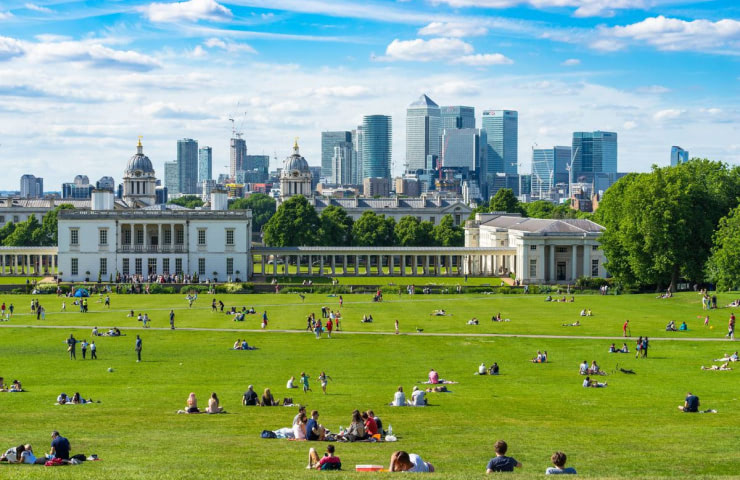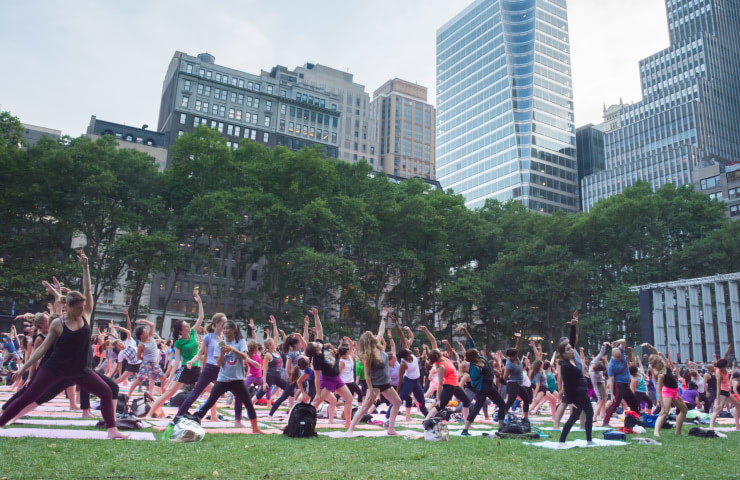04/03/2024
In today’s digital world, cities and regions continue to play a more important role. Cristina Mateo, dean of IE School of Architecture and Design takes a deep dive into the urban trends of tomorrow.
As our world continues to develop, digitalize and automate, efforts to balance ethics with the rapidly advancing power of technology creates a blend of fear and optimism for urban landscapes. In order to stay ahead of the trends and events of 2024, we must move through the year with caution and excitement of what’s to come. Cristina Mateo, dean of IE School of Architecture and Design describes the five trends that will shape urban spaces this year.
1. Shifting power from the country to city level
Governance and economic strength is shifting from the national level to more localized city or regional levels, further proving the growing importance of cities and regions as central actors in the global economy.
This shift also increases the role cities and regions play when addressing complex societal challenges.

Despite the financial power and significance of capital cities in the most populated countries, there’s a gap in the development of their public infrastructure. This imbalance shows that their economic contributions are not being fully matched by investments in essential public services and facilities.
This year will see general elections being held in some of the world’s most populated countries, including the United States, Indonesia, Pakistan, Bangladesh and Mexico. This is a big opportunity for urban areas within these nations to advocate for more autonomy and resources to tackle local issues, notably housing.
The World Cities Summit (WCS) 2024, which will be held in Singapore in June, serves as a platform for government leaders and industry experts to address the need for cities to play a bigger role in crafting solutions for urban living challenges.
2. Watching the ‘orange economy’ continue to grow
Today, cultural and creative industries contribute $4.3 trillion annually to the global economy and support nearly 30 million jobs worldwide. The creative orange economy, as labeled by UNESCO, highlights the mix of creation, production, cooperation and distribution, the fastest growing sectors worldwide. This dynamic economy requires a workforce with timeless, relevant skills in a constantly evolving environment.
The emphasis on creativity, innovation and entrepreneurship within these industries suggests that they are not only vital for economic growth but also for addressing global challenges through creative solutions. In Basque Country’s three capitals—Bilbao, Vitoria-Gasteiz and Donostia-San Sebastián—are responding to the call by hosting The Creativity World Forum 2024. The annual event brings together key players from the orange economy to collaborate and co-create solutions to sector-specific global challenges.
3. Meeting AI at a crossroads
Automation, digitalization and artificial intelligence are having repercussions on the workforce and pushing us to reexamine legal frameworks and ethical considerations. The introduction of legislative frameworks including the AI Act in the European Union and the CHIPS and Science Act in the US is a step toward regulating these technologies to ensure they benefit society while simultaneously considering risks.
Economist David Autor explains that 60% of today’s jobs did not exist 80 years ago, further proving the transformative effect of technology on the job market. A market that is more dynamic than ever before requires workers to adapt to new roles that come from technological progress.
This transformation is not limited to traditional sectors but also significantly affects the creative economy, as demonstrated by the Hollywood writers and actors’ strike. Prompted by concerns over the impact of generative AI on human creativity and the valuation of creative work, the strike underscores the need for creators to understand these technologies and advocate for the value of their contributions in a changing landscape.
The World Economic Forum’s session in Davos, “Rebuilding Trust,” focused on AI’s role in the economy and society, providing global leaders the space to address these challenges. The discussions forged a path towards harnessing AI’s potential while making sure it serves the public good.
4. Allowing private innovation and public sector-led urban development to grow in parallel
The dynamics between private tech companies and traditional public sector entities are continuously evolving. Private large tech companies, for example, are influencing urban planning and the creation of new urban settlements, as highlighted by Carlo Ratti’s perspective on “Billionaire-Built Cities.”
Private capital and innovation-driven approaches to city building are led by large private tech companies. These billionaire entrepreneurs increasingly play a role in decision-making, proposing to design and develop urban spaces. A shift in development power could potentially bring in innovative solutions and efficiencies; however, it also raises concerns about governance, equity and public participation.
Although the private sector is booming, the public sector will not be forgotten, especially as it continues to play a massive role in urban development projects. Six out of 10 of the largest construction megaprojects currently underway are in Saudi Arabia, a country with a strong public investment in infrastructure and urban development. The upcoming Cityscape Global conference there is an opportunity to explore how these dynamics are being addressed in practice, potentially setting precedents for how private and public sectors can collaborate.
The underlying trend suggests a tension and potential complementarity between private innovation and public sector-led urban development. The call for a balance between viewing people as citizens versus consumers highlights the need for bringing together private sector efficiency and innovation with public sector inclusiveness and equity.
5. Emphasizing social interaction
When it comes to the Environmental, Social and Governance (ESG) criteria of urban planning, the social part of it all still seems to be getting left behind. Despite being overshadowed by environmental concerns, there’s a trend in the social aspect, including community cohesion, urban liveability and participation in cultural and public events.
The importance of a strong sense of community is being acknowledged as essential for liveable cities. This is supported by the idea that social bonds and community engagement can lead to better governance participation and lower crime rates, echoing author, theorist and activist Jane Jacobs’ concept of “eyes on the street” as a natural crime deterrent.

Green and public spaces foster face-to-face encounters and sustain urban communities.
The resurgence of public events following the global pandemic, alongside the success of large-scale live music and cultural events surpassing pre-pandemic economic levels, shows the public’s desire for shared experiences and community interaction.
This trend is also driving an ecosystem of content creators and a demand for live events, as shown by the immediate sell-out of upcoming concerts in Madrid by performing artists Taylor Swift and Karol G. What’s more, the creator economy—set to potentially reach $480 billion by 2027—is becoming an increasingly significant economic sector, with festivals like South by Southwest (SXSW) dedicating tracks to it. The expansion of SXSW to Sydney further shows the global relevance of this trend.
As we dive into the urban trends of 2024, it’s clear that we’re standing at the crossroads of significant change, with power, innovation and community at the heart of the conversation.








